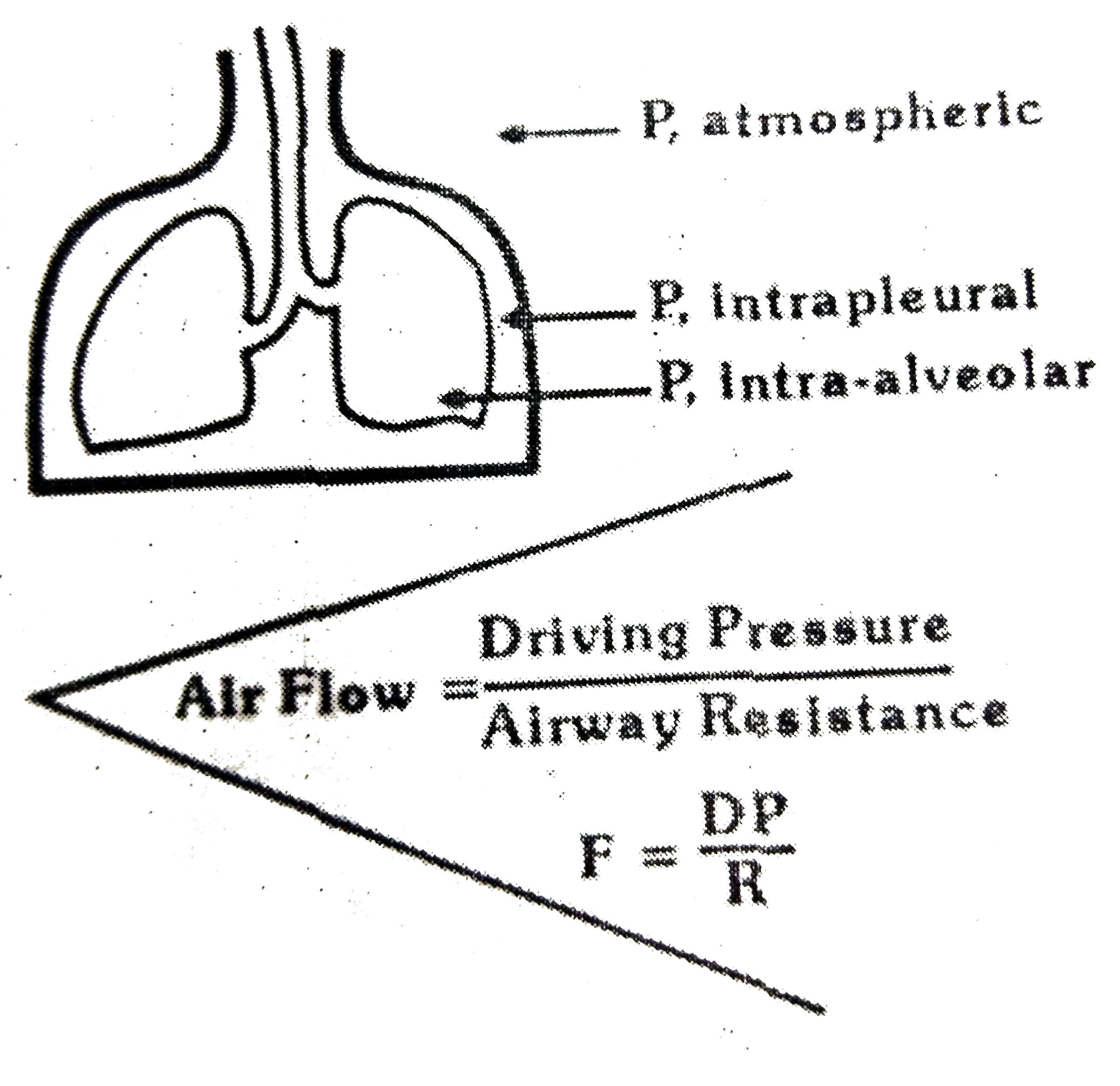The alveolar ventilation is the
amount of air available for gas exchange in the lungs
vital capacity divided by the respiratory rate
tidal volume times the respiratory rate
minute ventialation plus the dead space
The correct Answer is:A
Step-by-Step Solution:
1. Understanding Alveolar Ventilation: Alveolar ventilation refers to the amount of air that reaches the alveoli, the tiny air sacs in the lungs where gas exchange occurs. It is crucial for the exchange of oxygen and carbon dioxide between the lungs and the bloodstream.
2. Identifying the Options: The question provides four options regarding what alveolar ventilation is. We need to analyze each option to find the correct definition.
3. Evaluating the Options:
- Option A: "The amount of air available for gas exchange in the lungs." This option aligns with the definition of alveolar ventilation, as it specifically refers to the air that participates in gas exchange.
- Option B: "Vital capacity divided by the respiratory rate." This does not define alveolar ventilation but rather relates to other respiratory measurements.
- Option C: "Tidal volume times the respiratory rate." While tidal volume is part of the equation, this does not account for the dead space in the lungs, which is crucial for defining alveolar ventilation.
- Option D: "Minute ventilation plus the dead space." This option is incorrect because minute ventilation refers to the total volume of air inhaled or exhaled in a minute, and adding dead space does not define alveolar ventilation.
4. Conclusion: Based on the analysis, the correct answer is Option A: "The amount of air available for gas exchange in the lungs."
Final Answer: Alveolar ventilation is the amount of air available for gas exchange in the lungs.
---
- Option A: "The amount of air available for gas exchange in the lungs." This option aligns with the definition of alveolar ventilation, as it specifically refers to the air that participates in gas exchange.
- Option B: "Vital capacity divided by the respiratory rate." This does not define alveolar ventilation but rather relates to other respiratory measurements.
- Option C: "Tidal volume times the respiratory rate." While tidal volume is part of the equation, this does not account for the dead space in the lungs, which is crucial for defining alveolar ventilation.
- Option D: "Minute ventilation plus the dead space." This option is incorrect because minute ventilation refers to the total volume of air inhaled or exhaled in a minute, and adding dead space does not define alveolar ventilation.
Topper's Solved these Questions
Similar Questions
Knowledge Check

The alveolar ventilation per minute refers to the amount of fresh air which reaches the alveoli of the lungs per minute. Alvelor ventilation per minute equals theA(tidal volume - anatomic dead space) x frequency of breathingBtidal volume x frequency of breathingCanatomic dead space x frequency of breathingDphysiologic dead space x frequency of breathingIf alveolar ventilation is 4200 mL/min respiratory frequency is 12 breaths per minute, and tidal volume is 500 mL. what is the anatomical dead space ventilation ?
A1800 mL/minB6000 mL/minC350 mL/minD1200 mL/minIf alveolar ventilation is 4200mL/min, respiratory frequency is 12 breaths per minute, and tidal volume is 500 mL, what is the anatomical-dead-space ventialtion ?
A1800mL/minB6000mL/minC350mL/minD1200mL/min
A swimmerbreathing through a pipe has a respiration rate of 10/min, a tidal volume of 550 ml and an effective anatomic dead space of250 ml. Whatis his alveolar ventilation?
View SolutionThe ventilation movements of the lungs in mammals are governed by
View SolutionPulmonary ventilation movements are due to :
View SolutionWhich is the correct sequence of steps in respiration?
a. Transport of gases by the blood
b. Breathing or pulmonary ventilation
c. Cellular respiration
d. Diffusion of O2andCO2 between blood and tissues
e . Diffusion of =O2 and CO2 across alveolar membrane
View SolutionArrange the given steps of respiration mechanism in the order they occur in
(I) Diffusion of gases across the alveolar membrane
(II) Diffusion of O2 and CO2 between blood and tissue
(III) Breathing or pulmonary ventilation
(IV) Utilisation of O2 by the cells
(V) Transport of gases by the blood
View Solution
